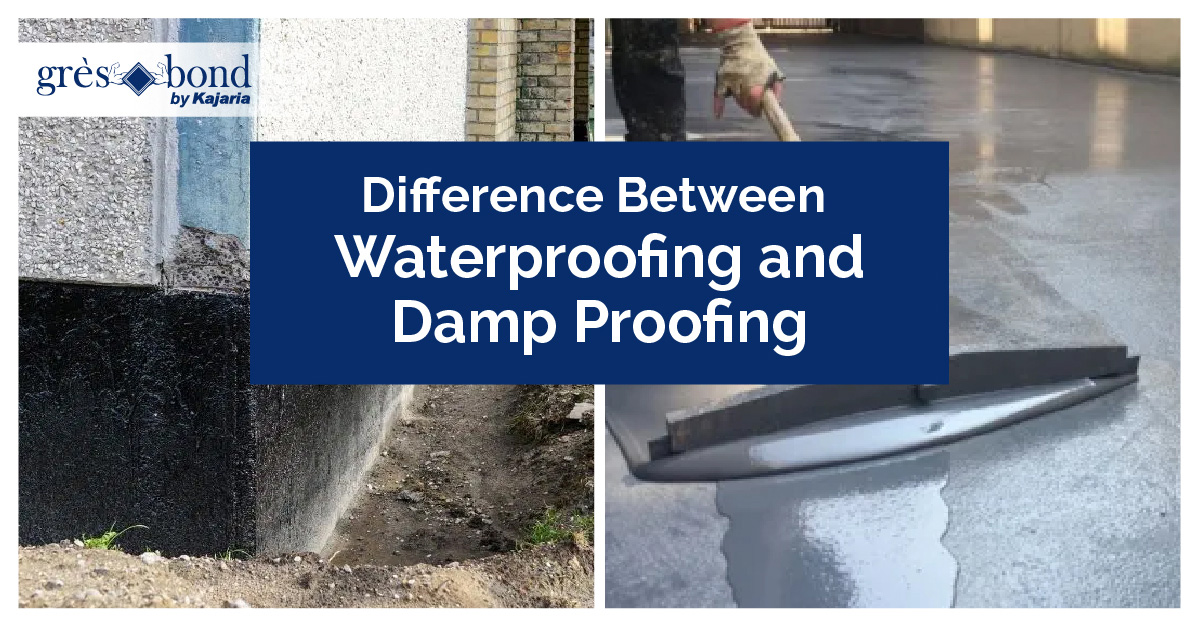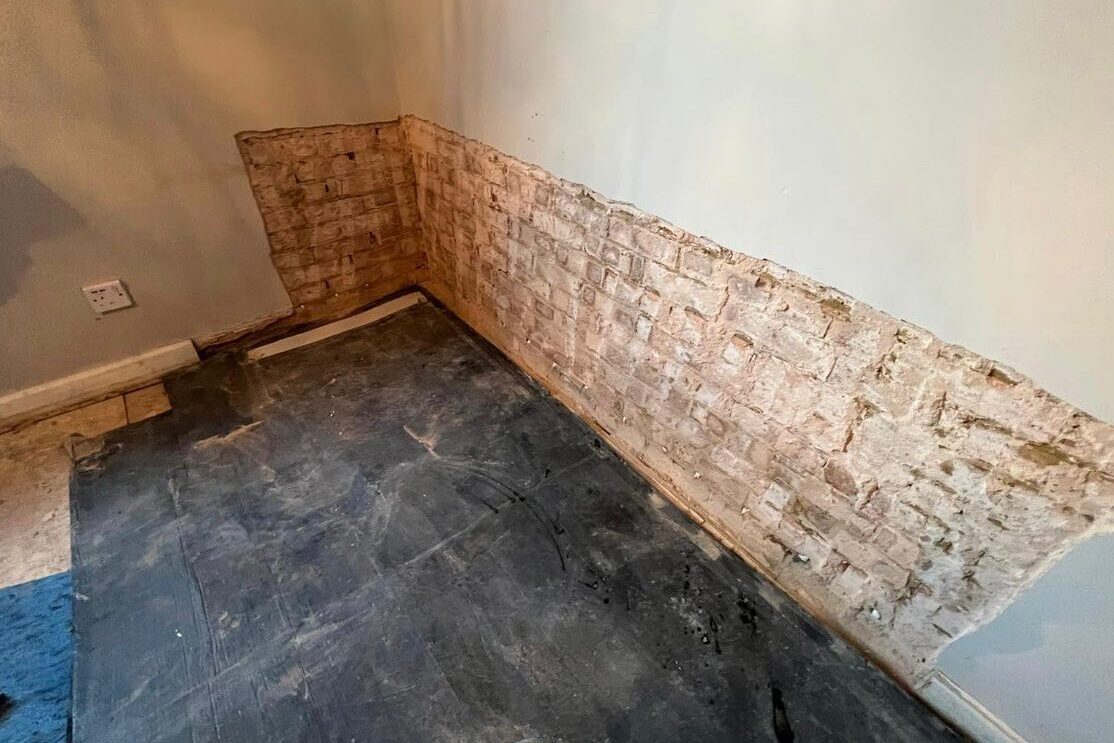Checking Out the Different Techniques and Solutions for Effective Damp Proofing
Wetness in structures presents significant obstacles to both structural integrity and interior air high quality. Numerous techniques and options have actually emerged to fight this prevalent problem. From traditional damp-proof membrane layers to cutting-edge chemical therapies, each technique provides one-of-a-kind advantages. Recognizing these choices is essential for effective dampness control. Choosing the right remedy depends on details structure problems and requirements, motivating further exploration into the most reliable moist proofing approaches readily available.
Understanding the Root Causes Of Wetness
Moisture can develop from numerous resources, comprehending these reasons is important for efficient remediation. Typically, moisture originates from 3 primary resources: rising moist, passing through moist, and condensation. Rising wet happens when groundwater travels up via porous products, such as block or stone, often due to an absence of a reliable barrier (damp proofing newcastle). Permeating damp is normally caused by exterior variables, including roofing system leaks, defective seamless gutters, or harmed walls, allowing water to penetrate a residential or commercial property. Condensation, on the other hand, results from excess moisture in the air, frequently worsened by poor ventilation and temperature differences, resulting in water beads basing on surface areas. Recognizing these underlying problems is essential, as each type of wetness requires a customized technique for remediation. Proper evaluation assists in identifying the most effective remedies, eventually protecting the architectural integrity of a structure and boosting interior air high quality
Conventional Damp-Proof Membrane Layers

Chemical Damp-Proofing Solutions
Chemical damp-proofing options provide an innovative method to stop wetness breach in structures. These approaches usually involve the application of fluid chemicals that permeate stonework and create a barrier versus increasing damp. Generally utilized chemicals include silanes, siloxanes, and various other water-repellent representatives that react with surface area materials to produce a hydrophobic layer.The application procedure usually requires exploration holes into the walls, injecting the chemical option, and allowing it to heal. This approach is especially advantageous for older structures where standard damp-proof membranes may be impractical. Chemical damp-proofing can be less turbulent and extra affordable than substantial improvement projects.While effective, these solutions depend on appropriate application and environmental problems for peak efficiency. mould removal newcastle. Routine upkeep and tracking are necessary to guarantee the long life of the damp-proofing treatment. On the whole, chemical damp-proofing represents a versatile option for protecting buildings versus moisture-related damages
Dental Caries Wall Building Techniques
Cavity wall surface construction strategies use numerous advantages, specifically in dampness control and energy performance. By incorporating an air space between 2 layers of masonry, these walls properly mitigate water ingress while boosting insulation. This mix not only secures frameworks from moisture but additionally adds to reduced power consumption.
Benefits of Dental Caries Wall Surfaces
When taking into consideration reliable wet proofing approaches, the benefits of tooth cavity wall surfaces attract attention prominently. Tooth cavity walls contain two different layers, creating an air void that properly decreases wetness penetration. This layout minimizes the risk of wetness, as the outer wall serves as an obstacle versus rain and water access. Furthermore, tooth cavity walls improve thermal insulation, which adds to energy efficiency by lowering warm loss. They likewise offer sound insulation, assisting to create a quieter indoor setting. The air gap permits for ventilation, which helps in wetness control and reduces the possibility of mold growth. These advantages not just enhance the total comfort of a building however also add to its longevity and structural stability.
Moisture Control Methods
Reliable moisture control approaches are vital in tooth cavity wall construction to assure lasting protection against wetness. One primary approach entails the incorporation of weep openings, which promote water drain from the dental caries, stopping build-up. In addition, the use of breathable membranes can assist manage moisture levels while allowing entraped vapor to run away. Appropriate positioning of insulation is additionally essential, as it needs to not obstruct water drainage paths. Furthermore, making certain that the external fallen leaves of the cavity wall are created with waterproof products boosts general durability. Normal maintenance checks are vital to determine any type of obstructions or damage early, protecting the structure's integrity. Eventually, a mix of these strategies develops a durable protection against wetness breach in dental caries walls.
Insulation and Power Effectiveness
Insulation plays a crucial duty in enhancing energy performance within cavity wall surface building. By including insulating products, these walls create a thermal obstacle that reduces warmth loss and reduces energy intake. Efficient insulation not just aids keep a stable indoor temperature but likewise mitigates the threat of wetness, as it avoids condensation within the wall cavity. Numerous techniques, such as making use of rigid foam boards or mineral wool, can be utilized to accomplish optimal insulation performance. Furthermore, proper installation is important to ensure that spaces and spaces are lessened, which can or else compromise power performance. Inevitably, a well-insulated dental caries wall surface contributes substantially to total sustainability and lowers heating and cooling expenses for house owners.
External Damp Proofing Techniques
Outside moist proofing methods are crucial for securing frameworks from moisture seepage. Two efficient methods include the application of waterproof membranes and the installment of French drains. These options assist alleviate water accumulation and preserve the integrity of buildings.
Waterproof Membrane Application
While different methods exist for protecting against moisture ingress, the application of waterproof membranes stays a highly effective external damp proofing technique. These membrane layers are typically made from materials such as polyethylene, rubber, or customized bitumen, giving a robust barrier versus water penetration. The setup process includes using the membrane layer to the outside surfaces of foundations or walls, guaranteeing full insurance coverage to stop leaks. Correct bond and sealing at joints are critical to maximizing effectiveness. Waterproof membranes can be used in different types, consisting of liquid layers and sheet membrane layers, permitting for adaptability based on the specific needs of the structure. This approach not only shields structures from moisture but additionally improves their longevity and structural honesty.
French Drainpipe Installment
One effective technique for taking care of groundwater and avoiding wetness buildup around a building's foundation is the setup of a French drain. This water drainage system consists of a trench loaded with gravel and a perforated pipeline that reroutes surface water away from the structure. Proper installment needs careful planning, making certain that the check here drain inclines far from the structure to promote ideal water circulation. In addition, the place of the drain is important; it should be placed in areas vulnerable to pooling or excess moisture. Routine upkeep, including clearing debris from the crushed rock and making certain the pipeline stays unblocked, is important for long-lasting performance. Ultimately, a well-installed French drain can substantially lower the risk of water-related concerns in basements and foundations.
Interior Waterproofing Strategies
Interior waterproofing approaches are crucial for protecting a structure's interior from wetness infiltration and possible water damages. These strategies commonly involve the application of specialized materials and techniques made to produce a moisture obstacle within the structure. One typical method is making use of water-proof finishings or sealers on walls and floors, which stop moisture from penetrating surfaces.Additionally, setting up indoor drainage systems, such as sump pumps, can effectively take care of water buildup in basements and creep areas. One more method entails the usage of vapor obstacles, which are mounted to hinder wetness movement from the ground right into living spaces.Moreover, addressing any kind of splits or voids in wall surfaces or foundations with ideal sealants guarantees a thorough defense against water invasion. By executing these indoor waterproofing approaches, homeowner can significantly lower the danger of mold growth, structural damages, and other moisture-related concerns. Proper execution of these methods is crucial for long-term defense and building honesty.
Routine Maintenance and Assessment Practices
Routine upkeep and evaluation methods are crucial for assuring the long-term effectiveness of moist proofing solutions in any kind of building. Routine checks make it possible for residential or commercial property proprietors to recognize early indications of wetness breach, such as peeling off paint, mold and mildew development, and stuffy odors. These indications can indicate underlying concerns that require prompt attention.Inspections need to be performed at the very least every year, concentrating on prone locations like cellars, creep rooms, and exterior wall surfaces. During these analyses, residential or commercial property proprietors ought to check out sealants, water drainage systems, and air flow to validate they work correctly.Additionally, maintaining downspouts and gutters is essential, as stopped up systems can cause water accumulation near the structure. Implementing a regular maintenance timetable, along with timely repair work, can significantly extend the life-span of damp proofing measures and shield the structural honesty of the building. Proactive measures ultimately contribute to the overall health and safety and security of the living atmosphere.
Regularly Asked Questions
The Length Of Time Does Damp Proofing Normally Last?
The duration of wet proofing effectiveness differs, typically lasting in between 20 to 50 years. Factors such as application top quality, ecological problems, and upkeep techniques significantly influence the longevity of the wet proofing therapy.

Can I Damp Proof My Home Myself?
The private contemplated the feasibility of DIY damp proofing. With correct research and the ideal products, it is feasible. Nonetheless, they additionally identified the importance of expert guidance to assure resilient performance and protect against future problems.
What Are the Indicators of Inefficient Damp Proofing?
Indicators of inadequate moist proofing include persistent musty odors, visible mold development, peeling off paint, moist patches on walls, and wood decay - damp proofing newcastle. House owners ought to attend to these issues without delay to avoid further damage and health and wellness concerns
Does Damp Proofing Affect Indoor Air Quality?

Just How Much Does Professional Damp Proofing Price?
Expert moist proofing prices vary significantly, usually ranging from $1,000 to $5,000 depending upon the property's dimension, the level of the moist concern, and chosen techniques. Each situation calls for a tailored analysis for precise rates. Frequently, moisture stems from 3 main resources: increasing wet, passing through wet, and condensation. When taking into consideration effective damp proofing approaches, the benefits of cavity walls stand out prominently. External damp proofing techniques are crucial for protecting structures from wetness infiltration. While different techniques exist for protecting against dampness access, the application of waterproof membrane layers remains an extremely effective outside wet proofing strategy. Indicators of ineffective damp proofing include consistent musty odors, visible mold and mildew development, peeling off paint, moist spots on wall surfaces, and timber decay.